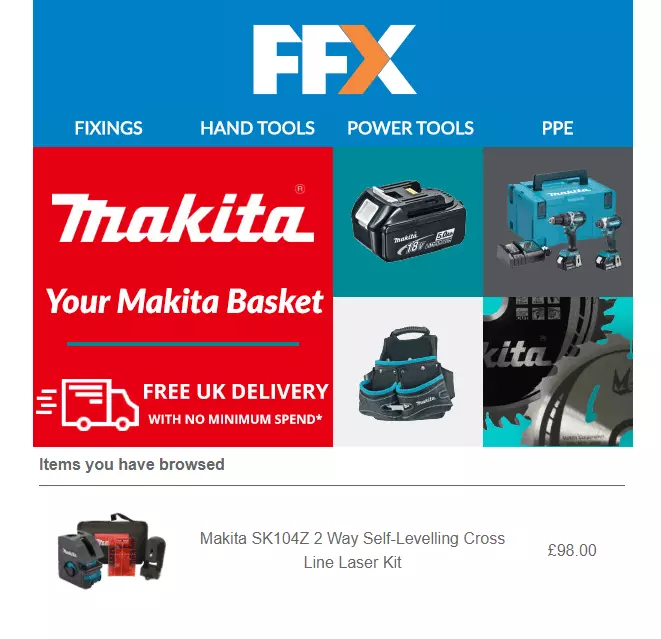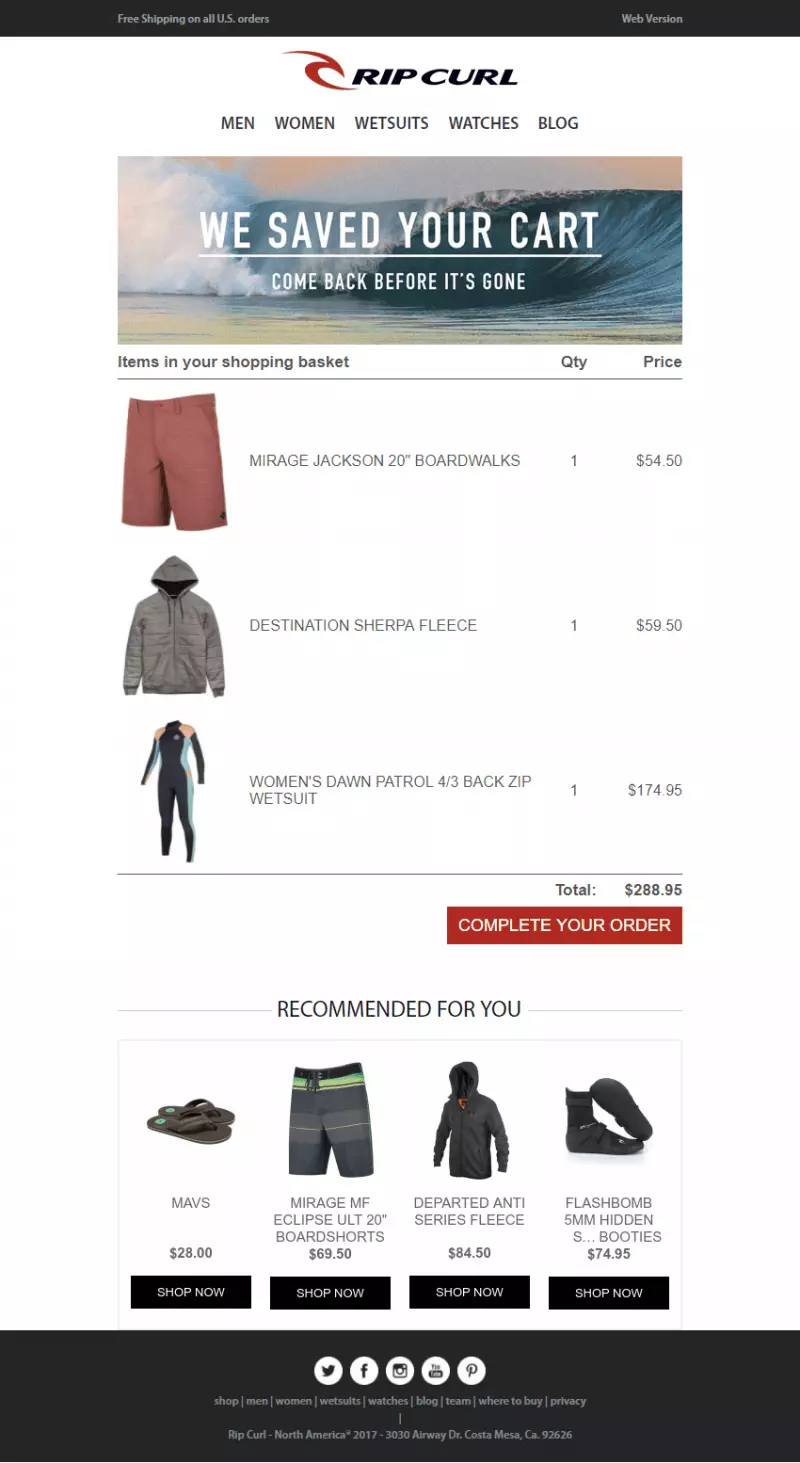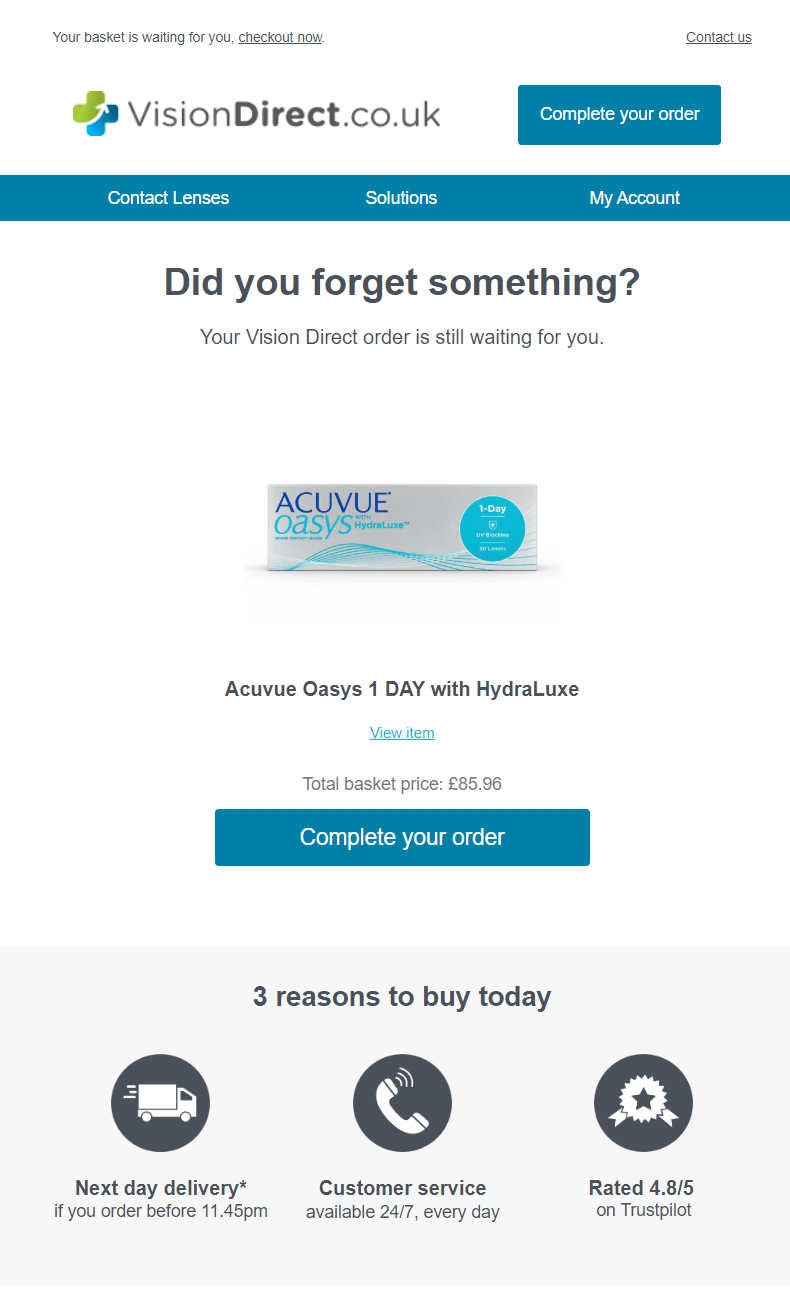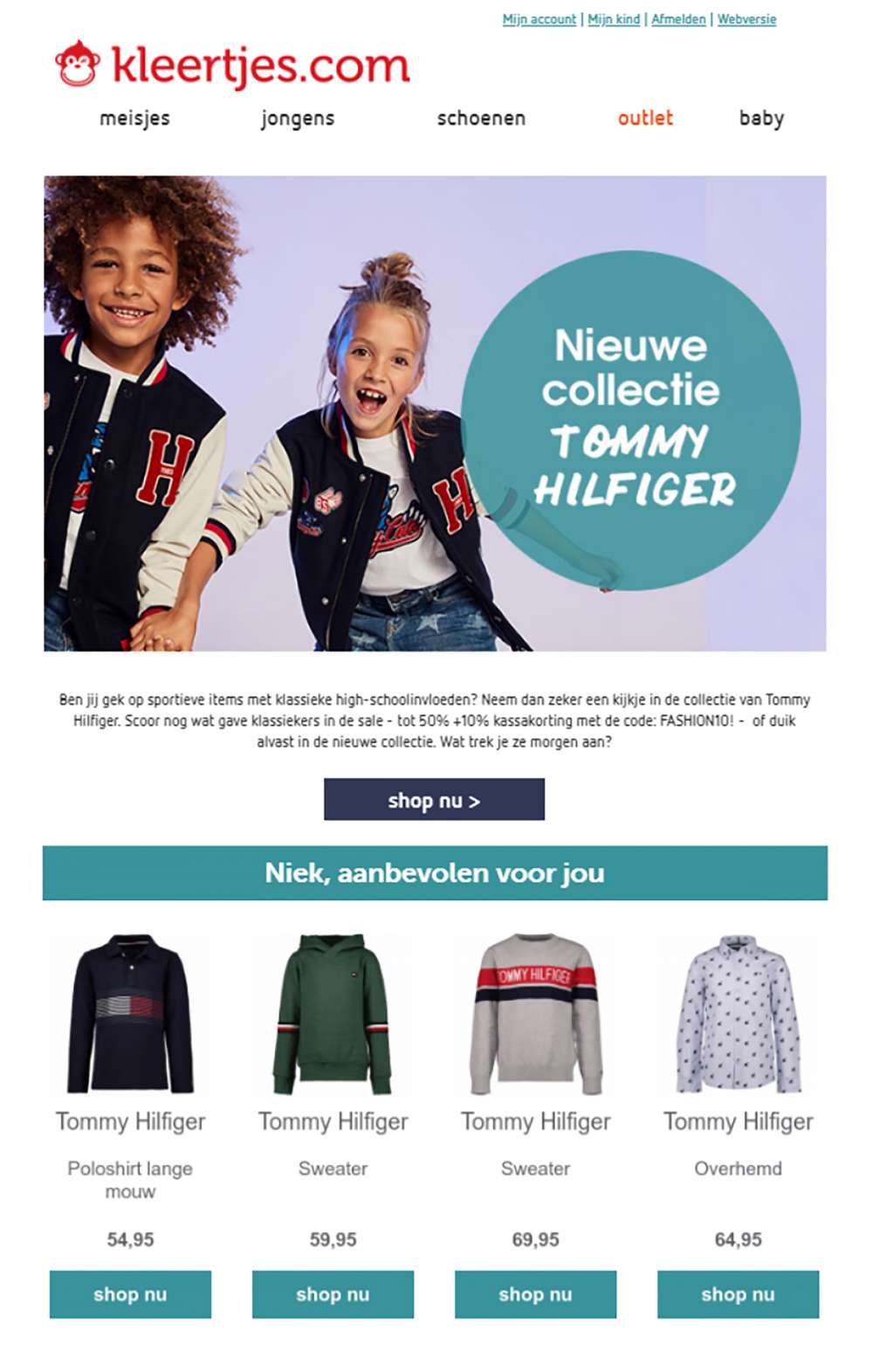Cart and browse abandonment recovery emails are a proven revenue booster. In fact, the average Fresh Relevance client doing cart and browse abandonment emails sees a sales uplift of 15%.
If you’re looking to get started with your own cart and browse abandonment emails or you want to hone the ones you already have, look no further than our 10 cart abandonment email best practices.
1. Keep it real-time
We recommend sending abandonment emails about 30 minutes after customers leave the site.
Leave the delay longer and you risk losing more shoppers to the competition. Send the abandoned cart email too quickly and you risk annoying ‘false alarm’ customers who were taking a brief pause before purchasing.
Try testing different timings to see what works best for your customer base and products.
2. Choose a good subject line
Make sure all your subject lines serve to remind the shopper of their recent visit. Try personalizing your abandoned cart email subject line with the browsed or carted brand name or product name to harness the power of familiarity and entice the shopper to open your email.
3. Use a dynamic banner
Don’t let that well-crafted subject line go to waste. Once the shopper has opened your abandoned cart email, the content must be immediately relevant, bringing your site and brand back to the forefront of their mind.
The hero banner is often the first thing that recipients will notice when they open your email. Transforming your banner into a piece of dynamic content will enable you to show each recipient the image that’s most likely to spark their interest.
FFX uses dynamic hero banners in their browse and cart abandonment emails, showing customers images based on the make of the carted product and product recommendations from the same manufacturer. The results speak for themselves – the emails achieve an impressive click to open rate of 45%, helping to recover lost sales.

4. Recreate the shopping cart
To ease the purchase decision, make sure you include details and descriptions of the products the shopper browsed or carted to recreate the whole customer’s cart, with links back to the cart’s checkout page on your site.
Rip Curl uses product imagery and descriptions to recreate the shopper’s cart and lead them back to their site. These tactics have paid off, as Rip Curl has seen an impressive 10.3% sales uplift with their abandoned cart emails.

5. Avoid being too salesy
These shoppers are already qualified leads: you know they are interested. The purpose of your browse and cart abandonment emails is to simply remind customers of products they are interested in, not treat them as you would a brand new shopper.
Remember to:
- Use a customer service tone. Your email must read like a customer service email and not be too sales-focused.
- Use similar branding to your website, but keep the layout very simple.
- Keep the email extremely short.
- Include a clear call-to-action, and make it something friendly like ‘Complete your Order’.
- Create urgency and provide useful information by letting them know that stocks could run out or that a sale is ending, for example.
- Include customer service contact details at the bottom.
Vision Direct keeps their cart abandonment email simple and to the point to recover abandoned carts.

6. Avoid distractions
Allow your shoppers to focus on the goal of completing a purchase, without getting distracted to avoid lost sales. Whilst your newsletter and other marketing emails can benefit from features such as social feeds, this could serve as a distraction in cart and browse abandonment emails if your customers abandon carts to visit Instagram rather than your site.
7. Don’t stop at one cart abandonment email
When it comes to abandoned cart emails, one is never enough. In our experience, multi-step cart abandonment emails are the best way to bring shoppers back to the checkout. By sending two or three abandoned cart messages at strategically chosen moments, you’ll give shoppers more options to reconsider making that purchase. Your audience is unique, so you’ll need to test and optimize to build the perfect frequency strategy for you. Start by sending your second email after 24 hours and your third after a week, for example.
Kleertjes.com has seen a 347% YOY increase for cart abandonment revenue and a 126% YOY increase for browse abandonment revenue with their multi-step abandoned cart email sequence. Their first abandoned cart email is sent within 30 minutes of a shopper abandoning their cart and a second email sent 24 hours later if the shopper hasn’t taken action.

8. Use discounts sparingly
Incentives must be used with care, otherwise they can devalue your brand and cause you to lose out on precious revenue. If customers do not respect prices as they stand, they will constantly be expecting a discount code, and may well abandon their cart intentionally in the hope of receiving one. Instead of blanket incentivizing and sending all cart abandoners a hefty discount in your first abandoned cart email, try sending a series of emails and only offer a coupon in the last email, for example.
9. Recommend similar and related products
Perhaps your shopper didn’t complete their purchase because they couldn’t find the perfect product. Combat cart abandonment by helping them make their purchase decision easier and recommending a range of alternative products similar to the one they’ve browsed or carted, allowing them to find the one that best suits their needs.
You can also take the opportunity to cross-sell and up-sell by inspiring shoppers with items that complement the one they have browsed or carted within your email marketing. That extra spark of inspiration might be what it takes for them to complete their purchase, helping you to increase their cart value in the process.
The Diamond Store offers 6 tailored product recommendations alongside the shopper’s browsed items in their abandoned cart email.

10. Include social proof
More than 1 in 3 consumers won’t purchase if an online store doesn’t show product ratings and reviews. Give your shoppers the boost of confidence they need by including star ratings and reviews alongside their browsed or carted products, like Glasses Direct does in the following example.

Social proof can also be used to drive urgency and speed up the purchasing process. Enhance your browse and cart abandonment emails with real-time information of how many other shoppers have bought or browsed those same products recently.
Cottages.com highlights the desirability of the browsed or carted property by displaying the number of other shoppers who have viewed it recently. This technique is particularly effective for holiday home letting companies such as Cottages.com, where availability is finite.

The benefits of cart and browse abandonment emails are clear. And with these 10 best practices, you’ll be able to take your emails to the next level and see your sales soar.
Get more tips and tricks in our complete guides to cart abandonment and browse abandonment.






